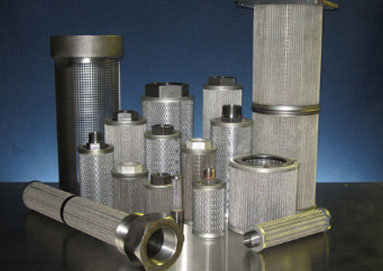
Identify Specific Applications
Your first task in selecting a hydraulic filter is to know its performance requirements based on the application. From a sizing perspective, the filter’s performance requirements are typically communicated in terms of Beta ratio, which refers to the ratio of particles that enter the filter compared to those leaving the filter. For applications requiring a high-performance element, it’s important to match it up with a filter that has an appropriate Beta ratio.
The filter manufacturer should have a record of the filter element’s performance based on its pore-size rating, but understanding your application’s performance requirements will give you a better idea of what to look for.
Hydraulic Components & Compliance with ISO
Now that you know your application’s performance requirements, you’ll want to take a closer look at its hydraulic system. The hydraulic components within the circuit will impact the kind of hydraulic filter needed to perform effectively and comply with industry standards. There’s an ISO-cleanliness code requirement that dictates the right filter element type to go with based on the type of hydraulic components within a system.
Understanding the type of hydraulic components that will work with the filter gives you a better idea of what filter will work best. For example, a circuit that has a directional-control valve and gear pump is fairly adept at handling dirt. That means that it may pair well with a lower-performance filter.
Fluid Viscosity As It Relates to Efficiency
One factor that is often overlooked when sizing hydraulic filters is fluid viscosity. Viscosity plays an important role in filter sizing, so ignoring it can result in the use of improperly sized filters. Using a filter that is too big or too small can lead to unnecessarily high operating costs, a larger footprint, high pressure drop, higher replacement costs, and premature tripping of clogging indicators.
Clogging Indicators
If a filter becomes clogged, this can be dangerous to the health of a hydraulic system. A clogged filter will starve the pump of hydraulic oil and the RPM will increase. This is often referred to as a catastrophic failure, as the pump will eventually burn out. A high pitch sound can indicate that a clog is forming, and the sound is caused by the increase in pump RPMs. A hydraulic filter with a relief valve will activate if pressure exceeds safe limits, eliminating the risk of cavitation and pump failure.
The best way to avoid filter clogging is to regularly clean and inspect filters. This will ensure that proper hydraulic flow is maintained.
Flow Rate: The Rates of Increased Pressure
Flow rate is an extremely important factor to consider when sizing filters. It’s especially recommended to consider maximum flow rate, but note that intermittent flow rate often exceeds maximum flow. When you underestimate your flow rate, you increase the likelihood of a pressure drop through the filter element. That can negatively impact the circuit’s ability to operate efficiently, leading to higher maintenance and operating costs. You’ll want a hydraulic filter that can provide low pressure drop even at higher flow rates.
Hydraulic Filters from DOMS, Inc.
Considering the factors outlined above will help you determine the right filter size for your needs. Correctly sizing your filter not only saves you money but also extends the lifespan of your hydraulic system. At DOMS, Inc., we manufacture various hydraulic system components, including suction filters, spin-on filters, suction strainers, and more. With other 60 years of experience, we have the knowledge to help you select the best filter size for your system.
To learn more about our products and capabilities, contact us or request a quote today.



